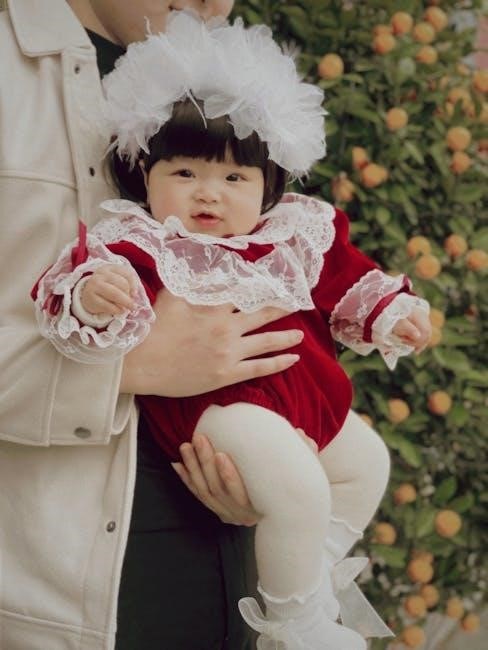Love, a multifaceted emotion, has captivated thinkers for centuries.
Psychologists and sociologists have developed various theories to understand its complexities.
These theories, including evolutionary and attachment perspectives, explore the reasons behind attraction and relationship formation.
Brief Overview of Love Theories
Love theories span various disciplines, including psychology and sociology, seeking to explain the fundamental aspects of human connection.
Attachment theory explores how early childhood experiences shape romantic relationships.
Sternberg’s triangular theory highlights intimacy, passion, and commitment as key components.
The color wheel theory categorizes love styles, while evolutionary perspectives view love as a survival mechanism.
These theories aim to understand the diverse facets of love, from initial attraction to long-term commitment and its role in human experience, addressing the question of why people fall in love;

Robert Sternberg’s Triangular Theory of Love
Robert Sternberg’s theory, introduced in 1986, posits that love comprises three components: intimacy, passion, and commitment.
These elements form a triangle, with their varying combinations creating different types of love experiences.
The Three Components: Intimacy, Passion, and Commitment
Sternberg’s triangular theory of love centers around three essential components.
Firstly, intimacy encompasses feelings of closeness, connectedness, and emotional bonding within a relationship.
Secondly, passion involves the drives connected to both physical attraction, romance, and sexual consummation.
Lastly, commitment embodies the decision to maintain the relationship through challenges.
These components, when combined, form different types of love.
Eight Types of Love According to Sternberg
Sternberg’s theory proposes eight distinct types of love resulting from different combinations of intimacy, passion, and commitment.
These include nonlove, characterized by the absence of all three components.
Liking involves intimacy alone.
Infatuated love comprises passion only.
Empty love is marked by commitment alone.
Romantic love combines intimacy and passion.
Companionate love merges intimacy and commitment.
Fatuous love links passion and commitment.
Consummate love, the most complete form, integrates all three components.
Attachment Theory of Love
Attachment theory explores how early childhood experiences shape romantic relationships.
It posits that attachment styles influence how individuals approach intimacy, dependency, and commitment in their adult love lives.
Attachment Styles and Romantic Relationships
Attachment theory proposes that our earliest bonds with caregivers create internal working models that shape our expectations and behaviors in romantic relationships. Securely attached individuals tend to form healthy, trusting partnerships characterized by intimacy and emotional availability. Anxious-preoccupied individuals may crave closeness but fear rejection, leading to clingy or demanding behaviors. Avoidant-dismissive individuals may suppress their emotions and distance themselves from partners to maintain independence. Lastly, fearful-avoidant individuals experience a mix of both anxiety and avoidance, creating a complex pattern of relationship dynamics.

Color Wheel Theory of Love
John Lee’s Color Wheel Theory uses color psychology to describe different love styles.
These styles, like colors, can mix to create unique relationship experiences, influencing compatibility and relationship dynamics between partners.
John Lee’s Six Styles of Love
John Lee’s Color Wheel Theory proposes six distinct styles of love, each representing a different approach to romantic relationships.
These include Eros (passionate love), Storge (friendship-based love), and Ludus (game-playing love). Additionally, there’s Mania (obsessive love), Pragma (practical love), and Agape (selfless love).
Individuals often exhibit a combination of these styles, influencing their relationship preferences and behaviors. Understanding these styles can provide insights into relationship compatibility and dynamics, highlighting how different approaches to love can interact.
Evolutionary Perspective on Love
From an evolutionary standpoint, love serves as a survival mechanism.
It promotes long-term pair bonding, essential for raising offspring and ensuring species continuation.
Attraction and mate selection are driven by reproductive fitness.
Love as a Survival Mechanism
The evolutionary perspective views love as more than just an emotion; it’s a deeply ingrained survival strategy.
Love facilitates long-term relationships, critical for raising offspring and ensuring the propagation of genes.
Attraction, mate selection, and pair bonding are all influenced by factors that enhance reproductive success and offspring survival.
This perspective highlights the biological underpinnings of love, emphasizing its role in fostering cooperation and resource sharing within partnerships, ultimately contributing to the overall fitness and survival of the species.
It underlines that love has a fundamental role in human evolution.
The Three Loves Theory
This theory suggests we experience three distinct types of love throughout life.
These loves—lust, passion, and commitment—differ in intensity and purpose.
Each love shapes us, teaching unique lessons about relationships and ourselves.
Lust, Passion, and Commitment
The “Three Loves Theory” proposes that individuals experience three distinct forms of love throughout their lifetime: lust, passion, and commitment.
Lust represents initial attraction and physical desire, operating primarily from primal instincts.
Passion encompasses intense emotional connection, romance, and excitement, often characterizing early relationship stages.
Commitment signifies a conscious decision to maintain the relationship, involving loyalty, shared values, and long-term goals.
These loves manifest differently within the brain and contribute uniquely to relationship dynamics and personal growth.
Symbolic Interactionism and Love
Symbolic interactionism emphasizes the role of shared meanings and assumptions in shaping relationships.
Love, according to this perspective, is constructed through interactions, shared experiences, and mutual understanding between partners.
Shared Meanings and Assumptions in Relationships
Symbolic interactionism posits that relationships are built upon shared meanings, orientations, and assumptions.
These shared understandings form the basis for people’s actions within the relationship.
Partners develop a common language of symbols, gestures, and interpretations that guide their interactions.
These shared meanings create a sense of predictability, stability, and mutual understanding, contributing to the overall satisfaction and longevity of the relationship.
Disruptions in these shared meanings can lead to misunderstandings, conflict, and ultimately, relationship dissolution.

Love as a Story Theory
This theory suggests that everyone possesses individual beliefs about relationships.
These beliefs shape expectations for partners and how relationships should unfold, impacting compatibility and satisfaction within the partnership.
Individual Beliefs and Conceptions About Relationships
The Love as a Story Theory posits that individuals develop unique narratives about love and relationships throughout their lives. These narratives, shaped by personal experiences, cultural influences, and observations, dictate expectations for romantic partnerships. These stories influence partner selection, relationship dynamics, and overall satisfaction. Compatibility arises when partners’ stories align, fostering shared understanding and expectations. Conversely, conflicting stories can lead to misunderstandings, dissatisfaction, and relationship challenges as individuals struggle to reconcile differing views on love. Understanding these narratives is crucial for navigating relationship complexities.
Quadruple Framework of Love
This framework proposes that love comprises attraction, resonance or connection, trust, and respect. These four elements intertwine to create meaningful bonds. It offers a comprehensive understanding of the multifaceted nature of love.
Attraction, Resonance, Trust, and Respect
The Quadruple Framework emphasizes four key components: initial attraction, a deep sense of resonance or connection, unwavering trust, and mutual respect. Attraction sparks interest, while resonance fosters a feeling of understanding. Trust builds security and allows for vulnerability within the relationship. Respect acknowledges and values the partner’s individuality. These elements create a foundation for a strong bond. Without these elements, love cannot fully develop.

Theories of Love in Philosophy
Philosophy delves into love’s meaning, exploring its connection to gender, race, and sexuality. Philosophers examine love as a truth of feeling, influencing perceptions of the world and personal existence.
Love in Philosophy of Gender, Race, and Sexuality
Philosophical explorations extend to examining love within the contexts of gender, race, and sexuality, recognizing diverse expressions and experiences. Iris Murdoch’s concept of “love as just attention” provides a framework for understanding ethical dimensions within relationships, highlighting the importance of genuine attentiveness. This analysis considers how social constructs shape our understanding and practice of love, challenging normative assumptions and promoting inclusivity. Exploring these intersections enriches our understanding of love’s complexities.
Neurobiological Processes Underlying Love
Scientific studies delve into the cognitive and neurobiological aspects of attraction and love; Researchers like Fisher examine brain activity to understand the biological foundations of these complex human emotions and their impact on behavior.
Scientific Studies of Attraction and Love
Scientists explore the neurobiological processes underlying attraction and love, moving beyond theoretical frameworks. These studies employ brain imaging techniques to identify neural correlates associated with different stages of love, from initial attraction to long-term commitment. Researchers investigate the roles of neurotransmitters like dopamine and oxytocin in shaping feelings of pleasure, bonding, and attachment. Understanding these biological mechanisms provides insights into the evolutionary roots of love and its influence on human behavior. Furthermore, this research explores how individual differences in brain structure and function may contribute to variations in romantic experiences and relationship dynamics.
